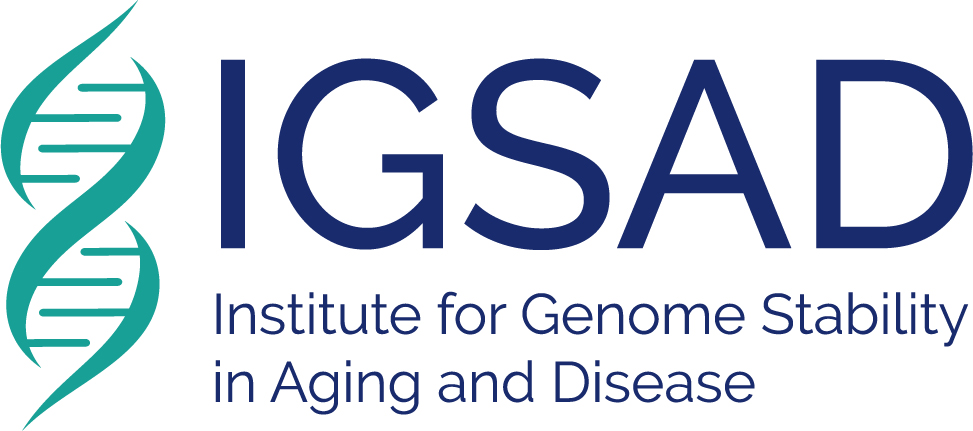The accurate replication and transmission of genetic material is of fundamental importance for cellular homeostasis and organism viability. Yet, cells are continually exposed to environmental and endogenous genotoxic agents that threaten DNA integrity. Cells respond to DNA damage by engaging highly complex signalling networks that coordinate DNA repair reactions with cell cycle checkpoint activation, chromatin reorganisation, changes in gene expression and metabolic responses. Defects in these DNA damage response pathways can have profound cellular and systemic consequences and drive premature ageing. The overarching goal of our research programme is to dissect the signalling and repair events that occur on the chromatin surrounding a DNA lesion. Our work specifically focuses on answering the following two questions:
- How do DNA damage response pathways crosstalk with telomere maintenance mechanisms? Telomeres are essentially one-ended DNA double-strand breaks (DSBs) and, due to their repetitive and G-rich nature, are at the same time also extremely prone to DNA breakage. As such, telomere homeostasis completely depends on a tightly regulated DSB response. This is activated under certain settings (for example after replication fork collapse or during recombination-based telomere extension) but is repressed under other settings (to prevent cytotoxic telomere fusions). Understanding the regulatory mechanisms surrounding this DNA damage response-telomere crosstalk is a major aspect of our research agenda.
- How do RNAs and their associated RNA-binding proteins help to organize and drive chromatin-based DNA damage responses. A key development in the DNA damage response field in the last decade has been the realisation that, at least in certain contexts, DNA damage signalling and repair are RNA- dependent processes. For example, various types of RNA species are generated directly at DSB sites, and these RNAs are key organisers of the chromatin-based DSB response. How RNAs are processed, stabilised and regulated at sites of DNA damage is not understood, but is likely mediated by RNA-binding proteins (RBPs). Understanding how RBPs connect RNA metabolism to chromatin-based DNA damage responses and how RBPs themselves may act as organizers of these pathways, for example by regulating the recruitment of DNA damage signalling and repair factors to DNA lesions, is the second major aspect of our research agenda. We employ state-of-the-art cell biological and omics approaches to comprehensively identify and characterize RBPs at different types of DNA damage, to map RBP chromatin dynamics, and to determine when and how they interact with RNA following genotoxic stress.

